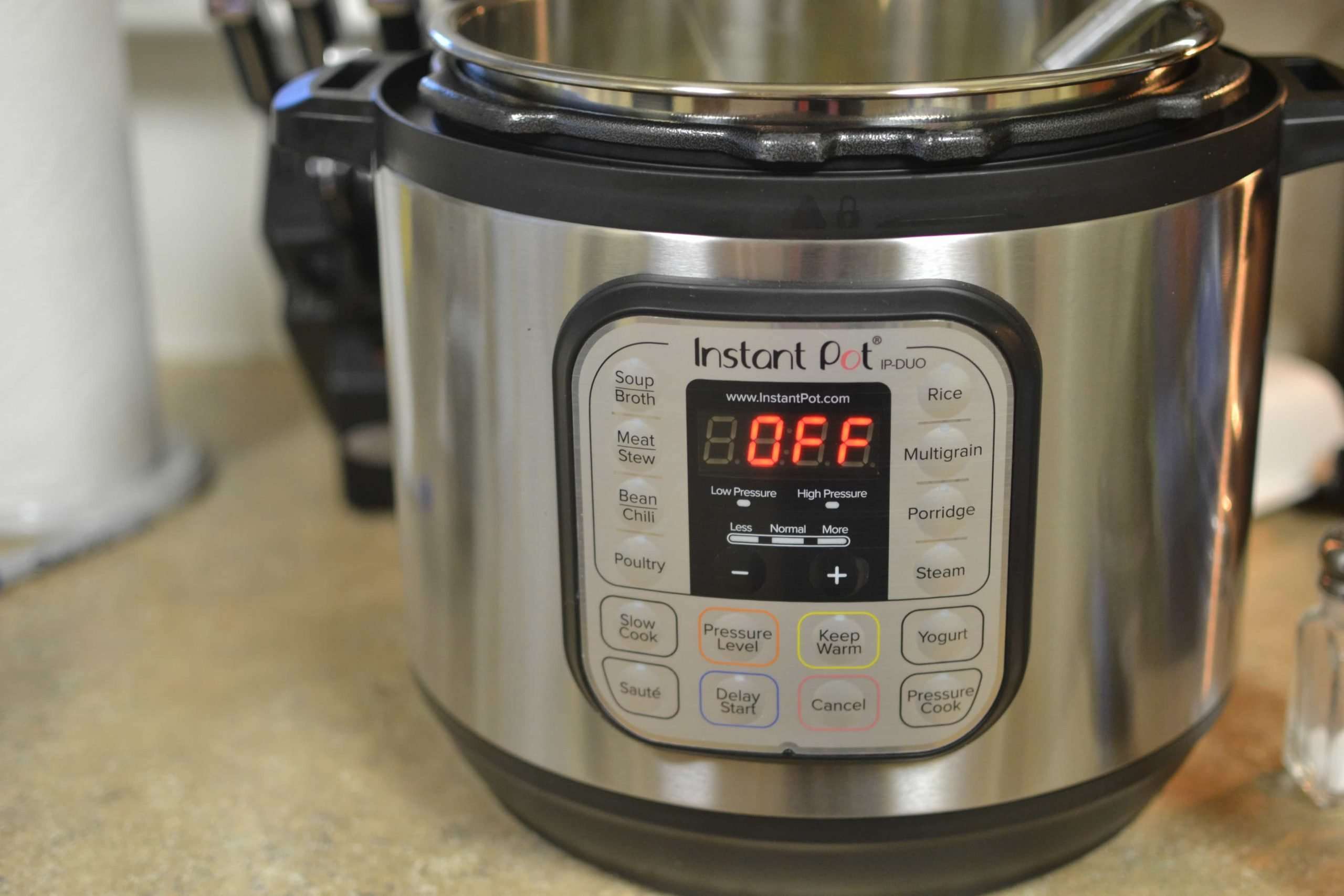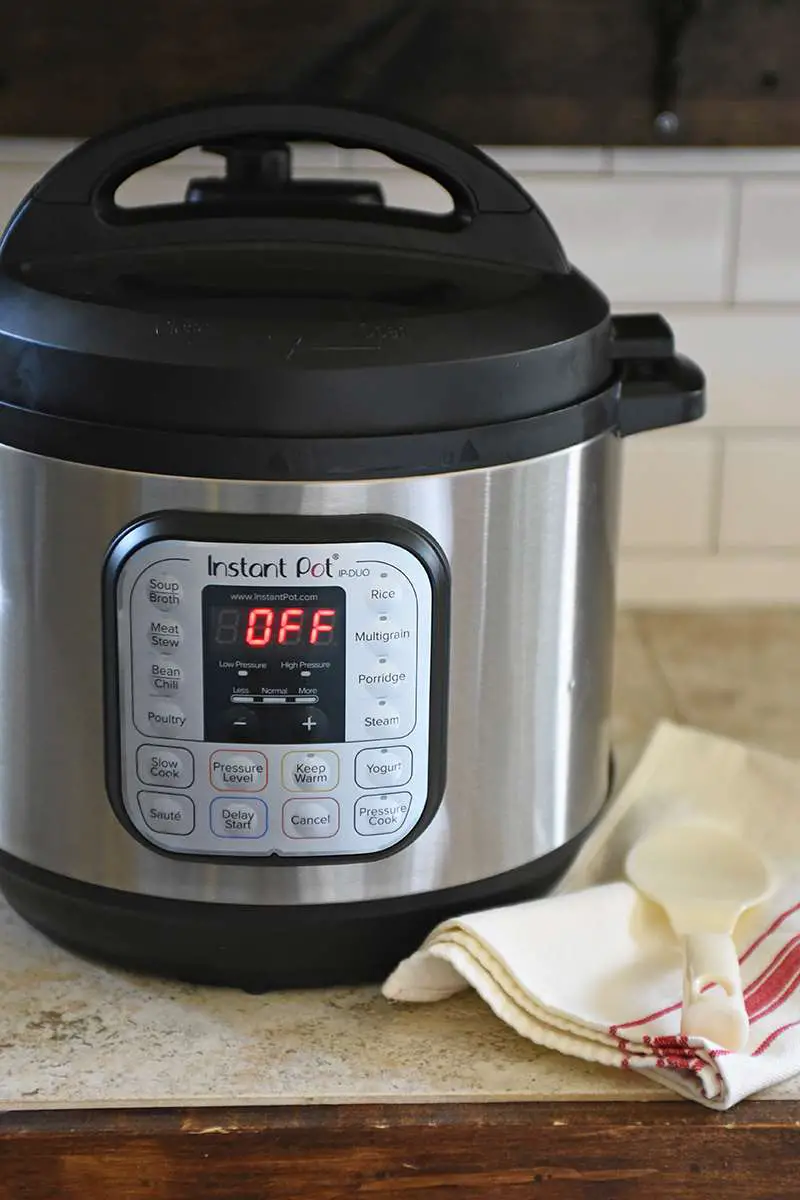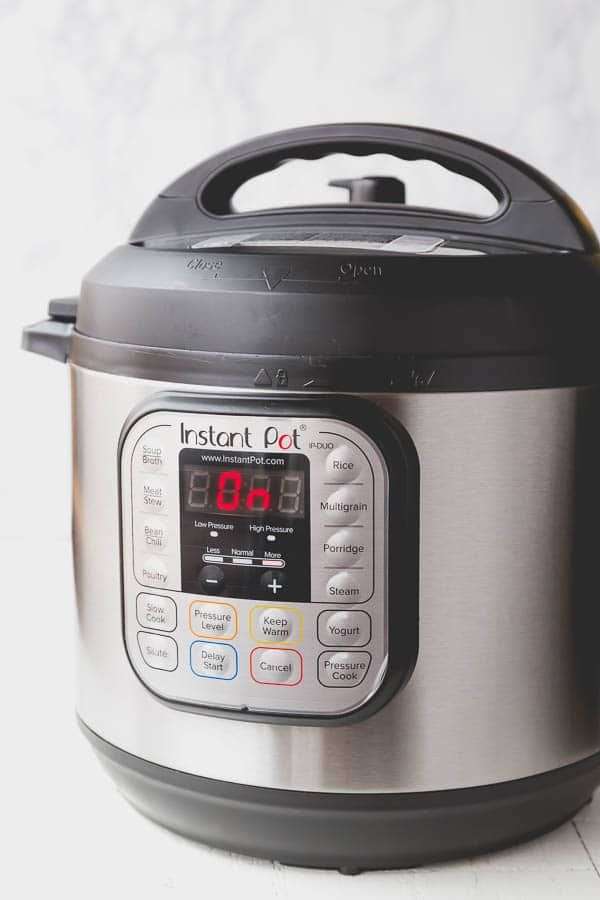Whats The Difference Between All The Instant Pot Models There Are So Many
Instant Pot is constantly improving and iterating on its product, so there are a lot of models to choose from. Heres a little cheat sheet.
If you just want a basic model to join in on the IP fun, get the Lux . It has the essential functions and will let you pressure cook, slow cook, and sauté. It does not have a specific yogurt setting.
If you want something with a little extra, go for the Duo Evo Plus , which came out recently and has 48 preset options , customizable settings, and an LCD display.
For the extra-ambitious home cook interested in sous vide and pressure canning, the Max adds both of those functionalities. This is the only model of the Instant Pot that gets to a high-enough pressure to pressure can.
When To Select Low Pressure
Low pressure should be used for delicate foods like eggs, fish, and vegetables. However, all of these foods can also be cooked using high pressure for a reduced amount of time. If you are confused about whether or not to use low or high pressure, its best to stick to high pressure. This should be specified in recipes.
A Quick Recap Of Key Cooking Stages
As we discussed in this post, there are three key phases to cooking in the Instant Pot. Once you add all ingredients and liquids, secure and lock the lid and choose your setting and time, the following things happen:
Recommended Reading: Instant Pot Burn Code
How To Use An Instant Pot: What You Need To Know To Get Started With Instant Pot Cooking
There are a few basic things that you need to know when using an Instant Pot electric pressure cooker. Once you use yours a few times, these will be like second nature. Depending on which Instant Pot model you own, the buttons may be labeled slightly differently. Consult the manual that came with your Instant Pot.
Minimum Liquid Required: As a general rule, you want to use at least 1 cup of liquid in your Instant Pot every time you cook with it. The Instant Pot uses steam and pressure to cook food, and you need liquid to create the steam and pressure. Some recipes may call for more or less liquid. I recommend following recipes from a trusted source while you are learning to use your Instant Pot.
Fill Level: Inside the Instant Pot inner pot, you will see a 1/2 and a 2/3 line marked. Never fill the Instant Pot higher than the 2/3 line with food or liquid . If you are cooking food that will expand during the cook time such as rice, quinoa or beans, do not fill the Instant Pot higher than the 1/2 line.
Pressure Cook or Manual Button: Depending on which Instant Pot model you own, the Pressure Cook button is sometimes labeled Manual and sometimes Pressure Cook. This is the button that you will press to start a pressure cooking cycle. Its your basic pressure cooking button.
+/- Buttons: Use these buttons to adjust the cook time.
Keep Warm/Cancel Button: Use this button to end a cooking program or turn on/off the keep warm function.
The Display Says Burn What Does That Mean

Suddenly big BURN letters are across the screen of your Instant Pot. This just means you didnt have enough liquid in your Instant Pot. The pot often displays this if its overheating to prevent food from, well, burning. Quick-release any pressure in the pot, add more liquid, and restart your cook time.
Be sure to have at least one cup of liquid surrounding the other ingredients or added to a thick sauce to prevent burning. Its usually recommended that cream-based ingredients and thickeners be added after pressure cooking to avoid burning.
Read Also: Instant Pot Hamburger Frozen
Pressure Cooking Requires Liquid
Before we continue, we must mention the most important aspect of pressure cooking. It requires liquid. This is because the pressure is built by the steam accumulating inside the pot, which is produced from the liquid.
Whether youre cooking rice, chicken breasts, pot roast, carrots, stew or cheesecake, you will need at least a cup of liquid for the Instant Pot to do its job.
This is a total amount of liquid and can be in the form of water, stock, tomato sauce, juice, wine and liquids released from the food while cooking , or a combination of those. Amount of liquid required varies depending on the recipe and amount of food but as a rule of thumb, 1 cup is always a good starting point. Also, the food doesnt need to be completely covered or submerged in liquid to cook.
Oh Wait Now My Recipe Says To Release Pressure How Do I Do That Why How
Yes! All of that magical, quicker-cooking pressure has to be released before you can open the pot! When the machine beeps to indicate its done cooking, hit the Cancel button, to avoid overcooking your food. Then you have two options: The first, basically, is do nothing. If you do this, the pressure will gradually release through the steam valve on its own, and in about 15 to 20 minutes the metal float valve will drop down. This is natural pressure release.
Or, you can quick release, which means opening the valve by turning it from Sealing to the Venting or by pressing the steam release button . Be SURE to keep any exponsed skin away from the vent, or you will get a steam burn! I like to use a towel or a long wood spoon. Use quick release for foods like vegetables and seafood that you want to avoid overcooking. Use natural release for dense foods like pulled pork, or that have a chance of splattering or foaming out the release valve if quick release is used.
Also Check: How Long Does It Take To Cook A Sirloin Tip Roast In A Pressure Cooker
Instant Pot Setup: Understanding The Lid
The lid of a pressure cooker is an integral part of the machine. Without this lid, you cant cook foods under pressure.
This is the steam release valve. It has two settings: sealing and venting.
Sealing: When cooking food under pressure, close the lid and line up valve with the wavy lines. This position seals the pot. It allows pressure to build as the food inside heats and produces steam. The valve wont lock into place when set to sealing. For safety reasons, it will always wiggle a little.
To set the valve to the sealing position, turn it clockwise as far as it will go.
Venting: Once the pressure cooker completes its cooking cycle, you must vent it. This will either happen immediately after the cooking cycle completes or after the pressure releases slowly over time, about ten minutes. You MUST vent the pot before opening.
To do that, turn the steam release valve toward venting . NEVER place your hand over the steam release valve. Use the small handle to turn the valve and keep your hand off to the left side. When doing a quick release, steam rushes out of the valve. For a natural release, no steam usually escapes. But its a good idea to vent it just in case theres any pressure remaining.
Want More Practice Bring It Back To Pressure
You did it! Great job. Try it all over again with the same hot water, if you like. This time, the timing on the cooker should default to 10 minutes, since that’s the last time you programmed in. Do the same steps as before but program the cooker to pressure cook for just 1 minute.
Since the water is in your cooker is already almost boiling to begin with, the cooker will come to pressure a lot faster than it did the first timewithin a minute or so.
Coco Morante
Recommended Reading: Pressure Cook Kale
Best Double Slow Cooker: Crock
When its time for entertaining, the Crock-Pot SCCPMD1-GR Hook Up Double Oval Connectable Entertaining System will come in handy. With two one-quart inserts, you can cook amazing appetizers or small dishes. You can also connect it to other similar devices for even more functionality. Consumers rave about how easy it is to cook and entertain with this convenient slow cooker.
Do You Need To Double The Cook Time For A Double Recipe
If you would like to double an Instant Pot recipe, you may double the ingredients . You do not need to double the cook time.
However, you may need to adjust the cook time based on the size/width of meat and vegetables. For example, a small 8 ounce chicken breast will cook faster than a large 12 ounce chicken breast and a small sweet potato will cook faster than a large sweet potato. Read all recipes and directions carefully to determine how long to cook your food.
Recommended Reading: Cheat Sheet Instant Pot Buttons
What Kinds Of Cooking Works Fine But Not Great In An Instant Pot
Slow cooking , any kind of delicate steaming, and simmering are three things that you technically can do, but often turn out just OK with the Instant Pot. The regular lid traps too much water for slow cooking. Delicate steaming is hard to achieve since the point of a pressure cooker is using high pressure steam to cook food its easy to get mushy, overcooked veggies. And while the Sauté setting is helpful, theres no way to decrease the temperature for simmering, so liquids tend to boil too quickly.
Instant Pot Program Keys

The most important thing you should know about all those buttons and settings on your Instant Pot is that they are preset suggested cook times. That means that if you hit âpoultryâ on it, it wonât be able to tell if you used frozen chicken or be able to tell you if the chicken is completely cooked.
You will still have to use common sense and a meat thermometer to tell if your food is completely cooked.
You may not use these as often, but here are some other buttons that you might see on an Instant Pot, along with what happens if you press them. With every button, if you press more or less after you press the specific button you can adjust the cooking time up or down.
Donât Miss: Turkey Breast Tenderloin Instant Pot
Recommended Reading: Can You Override Burn On Instant Pot
The Instant Pot Timer Is Not Starting
It is important to note that starting the Instant Pot will take at least 15 minutes to pressurize and start the timer. If you set something to cook for 5 minutes in 6 hours time, it will only start to pressurize at the 6 hour mark. It can take up to 15 minutes for pressure to build, and that is when the 5 minute cook time will start.
If its been longer than 20 minutes and the timer still hasnt started, you may need to reset it. Or it could be malfunctioning.
Pressure Isnt Building In My Pot
This usually happens when the pressure release valve has been turned to open when you sealed the lid, but you didnt notice at the time so steam is just slowly leaking out of the pot as it tries to heat up. This isnt good for the food inside, and it keeps the pot from actually reaching the correct pressure levels.
The best solution for this is to get in the habit of always checking the pressure valve when you seal the lid. Just look and make sure its in the locked position before you select your pressure cooking setting.
Recommended Reading: Instant Pot Says Auto
I Cant Seal My Instant Pot Lid
The pot lid can be tricky to lock and unlock without a little practice. If you are new to your Instant Pot, try moving the lid back and forth from the locked position until you get the hang of it. If you know for sure that your lid isnt locking properly, look for food blockages or a sign of a slipped sealing ring. The lid may also be damaged, but this is relatively rare Instant Pot lids are very tough.
How Do I Cook Sweet Potatoes In The Instant Pot
Sturdy vegetables like sweet potatoes are great for pressure cooking. Just place the trivet and a cup of water in the bottom of the Instant Pot, pierce a few similar-sized sweet potatoes all over with a fork, put them on top of the trivet, seal the lid, and set on HIGH for the following times: Small potatoes take 10 minutes, medium potatoes take 15 minutes, and large potatoes can take about 18 to 20 minutes. You can cook multiple potatoes, but its best to avoid placing them on top of each other.
Also Check: Instant Pot Sirloin Tip Roast Medium Rare
Why Is Liquid Sputtering Out Of The Valve
The Instant Pot is either too full or it is what you are cooking inside. Foods that typically froth or foam are pasta, soups, applesauce, beans, grains, and potatoes. When cooking foods such as these make sure pot is not more that 1/2 full and adding 1-2 tablespoons of oil to the liquids help stop foaming.
Natural Vs Manual Pressure Release
When the cook time is up on your Instant Pot, there’s still one more step — releasing the pressure.
There are two ways the pressure can be released. With natural pressure release, the valve on the lid stays in Sealing position and the pressure dissipates naturally over time. This can take anywhere from 20 minutes to more than an hour, depending on what you were cooking. Low-liquid meals take much less time than high-liquid meals, like soup or chili.
The other option is manual pressure release . Here, you’ll carefully move the valve into Venting position and watch as steam shoots out of it, releasing the pressure. This method is much faster, but very high-liquid meals, like soup, can still take about 15 minutes to release pressure manually.
So which one should you use? Consider that with natural pressure release, the Instant Pot is still full of pressure, so the food will continue cooking while the Instant Pot is in Sealing mode. Manual pressure release is useful — and necessary — when you’ve built in enough cooking time and cooking needs to be stopped as fast as possible.
If the goal is to cook a meal quickly, set enough time on the Instant Pot to cook your food and release the pressure manually when the time is up.
You May Like: Tri Tip In The Instant Pot
Prep And Fill The Instant Pot For Cooking
OK so here is the tricky part of describing how to use your Instant Pot. The most important thing you’re going to need to do is follow the directionsin any recipe you’re using. Some recipes may call for first searing a piece of meat . Some recipes like, say, a rice dish, might require an exact amount of water. Other recipes might involve a significant amount of prep work, like cutting a whole mess of veggies for an Instant Pot chili. I can’t walk you through everything, but, if you’re following a recipe, please pay attention to that.
Now, with that being said, there is one basic rule you must understand while using the Instant Pot. You must always always have liquid of some sort when cooking in an Instant Pot. This can be water, wine, beer, broth, whatever. But you need liquid.
Remember how the Instant Pot works? It cooks quickly by employing the energy of a sealed, pressurized, boiling liquid. If you don’t have some amount of liquid, you will burn your food. And you might create a dangerous situation.
How much liquid do you need? Well, that depends. Depending on the size of your cooker, you need a minimum of 1.5 cups to 2.5 cups. For a quick, specific cook, like rice, you might only need a cup and a half. If you’re making pulled pork from a massive pork shoulder, I’d recommend covering about half the meat in liquid.
How To Determine Cooking Time

Determining cook time on the Instant Pot is one of the most commonly asked questions I am faced with when it comes to using your Instant Pot.
I have worked at length to create a guide that will help you convert your favorite recipes into Instant Pot recipes.
Of course, you can follow recipes that have been tested by others as well–I experimented with baked potatoes and sweet potatoes over a dozen times before I nailed a consistent cooking time I could rely on.
Or experiment yourself! Use my guide as a starting point and then through trial and error perfect a recipe to suit your needs and your Instant Pot.
It is important to note that just like traditional cooking, you will need to account for altitude if living at higher elevations. I have an Instant Pot Altitude Chart to help with that!
**An electric Pressure Cooker does not reach the same pressure a stove-top pressure does, so you will need to increase cooking time by a few minutes for an electric pressure cooker if the recipe was written for a stove-top pressure cooker.
Don’t Miss: Opening Instant Pot Under Pressure
